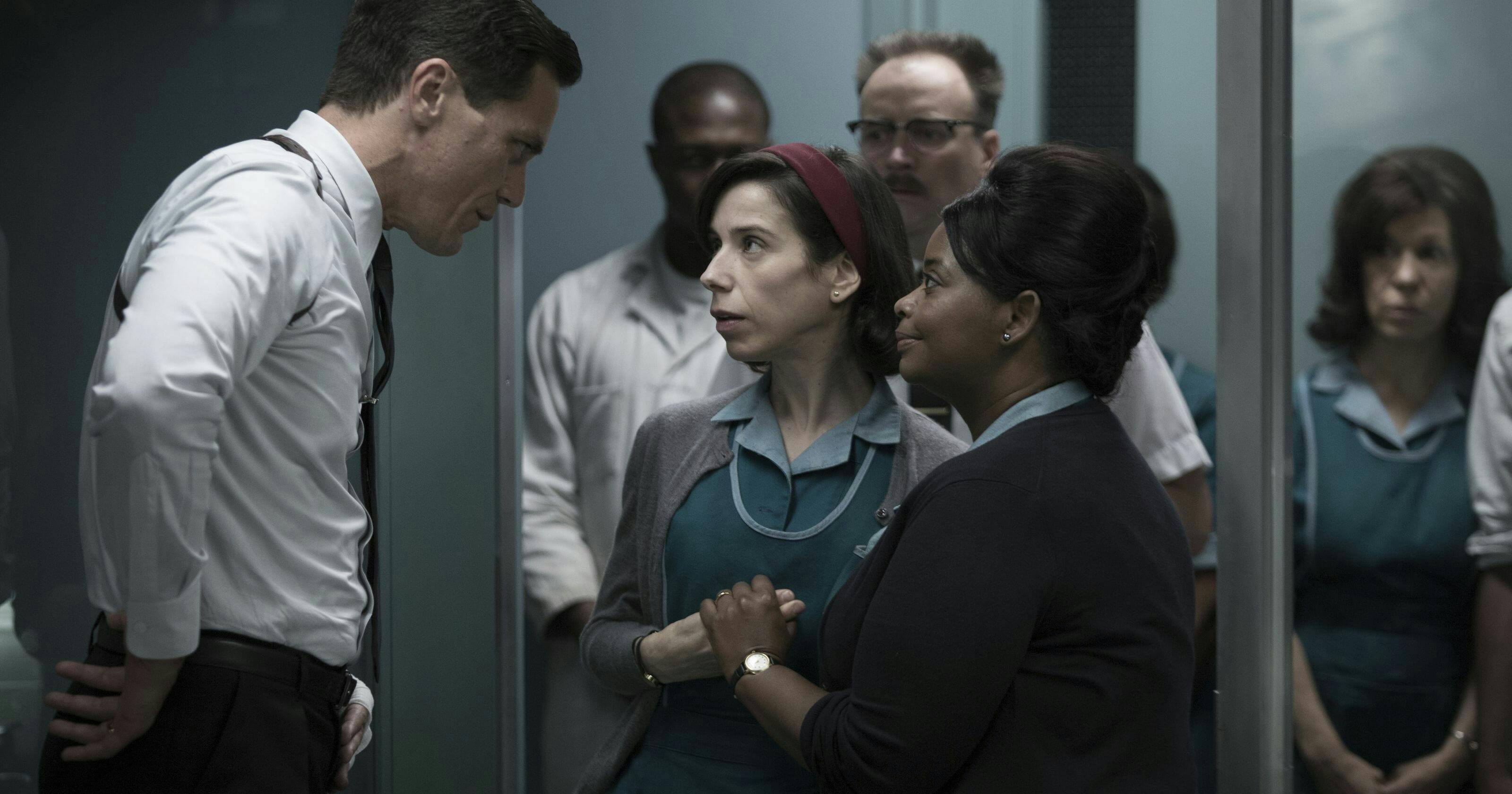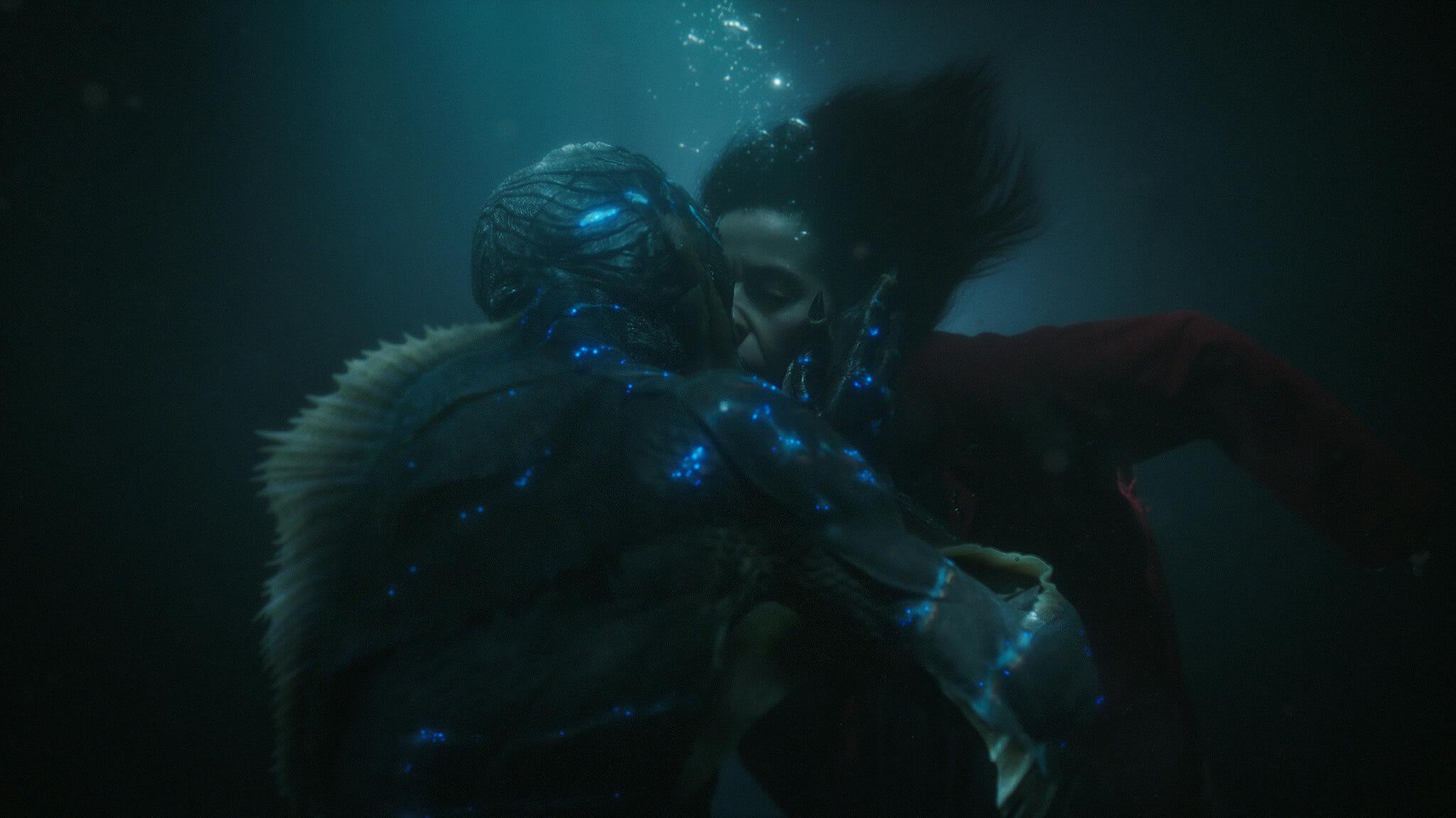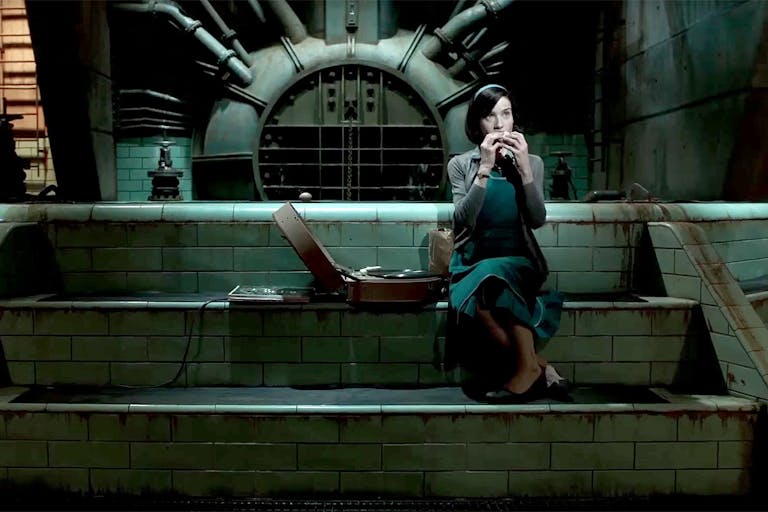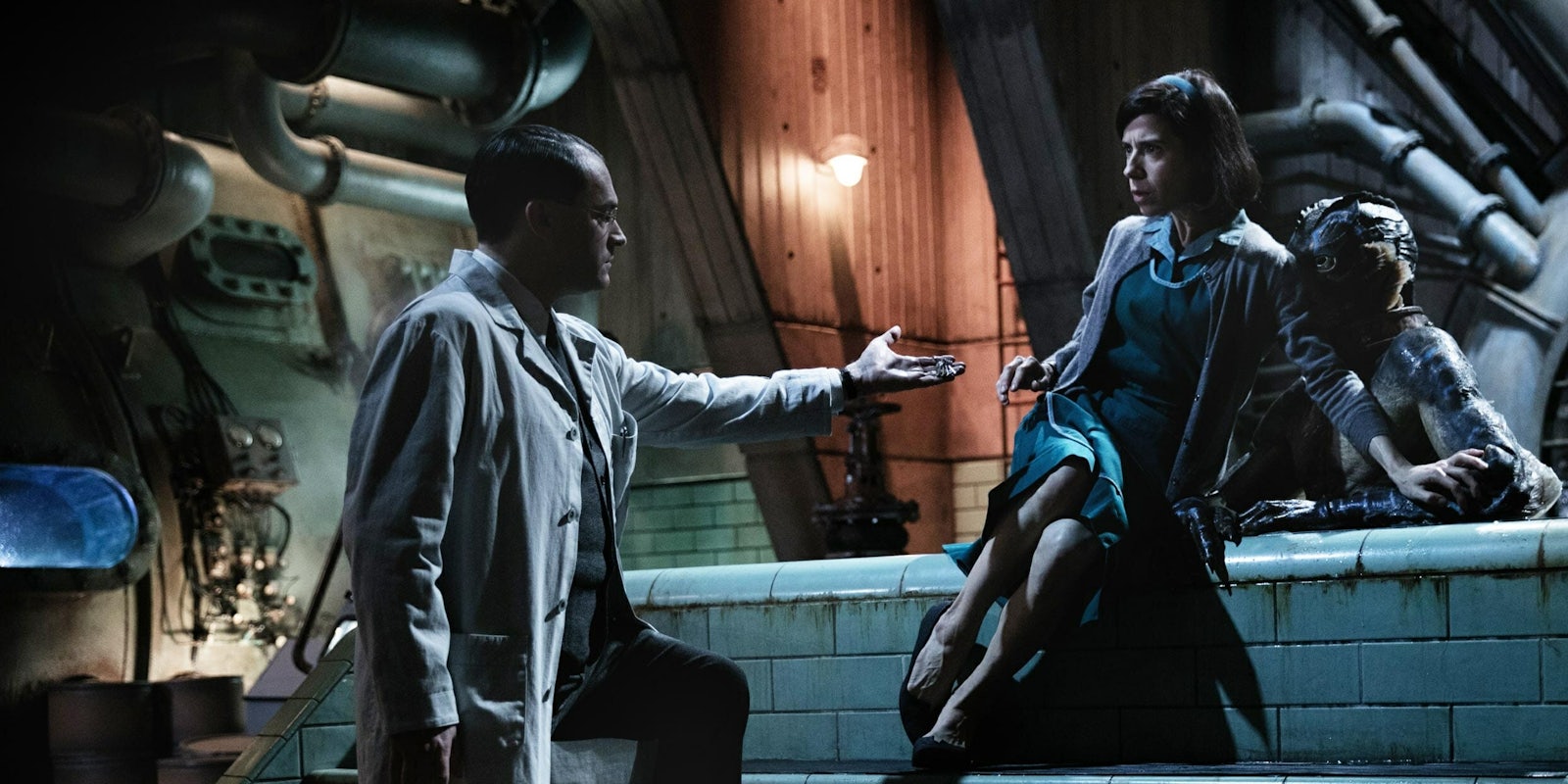Congratulations to The Shape of Water for making boiled eggs seem romantic. Beyond that, congratulations to Guillermo del Toro for getting this film made in the first place. In a career of stubbornly idiosyncratic work, it’s a masterpiece on par with Pan’s Labyrinth, without a hint of creative interference from outside forces. Del Toro delivered exactly what he wanted: a sumptuous romance with powerful political themes, starring a wordless amphibian as a thrilling object of desire.
Sally Hawkins stars as Elisa, a mute janitor at a secretive government research facility. When she and her friend Zelda (Octavia Spencer) first arrived at work, I felt something like a deep sigh of recognition. As a sci-fi fan, you often play the game of “what character would I be in this scenario?” If you’re a man, you’re offered plenty of options. Less so if you’re a woman—particularly in a historical setting like Cold War-era Baltimore. Elisa and Zelda are clever and complex, and they spend their lives mopping the floor behind accomplished men in lab coats. It’s a plausible and oddly satisfying new entry point to the world of MKULTRA and Area 51.
Del Toro specializes in underdog protagonists, usually women and girls. Rather than following a traditional hero’s journey, he understands the distinction between human worth and outward achievement. We know instinctively that Elisa and Zelda are better people than the powerful men who ignore them on a daily basis. Their strength is defined on their own terms, not the judgment of the world that oppresses them.

As you undoubtedly know, this is a love story between Elisa and an amphibious monster (Doug Jones), modeled off the Creature from the Black Lagoon. She finds him imprisoned in one of the labs, experimented on by the odious Colonel Strickland (Michael Shannon). As a water-dweller, he sees nothing unusual about Elisa communicating in sign language, and their relationship blossoms in a context without gender roles or societal expectations. In one of the most memorable food scenes of the year (the other being Call Me By Your Name‘s infamous peach scene), she tempts him out of the tank with boiled eggs from her packed lunch. To quote Rihanna, they find love in a hopeless place.
The Shape of Water‘s politics run deep, wedding del Toro’s favorite monster-movie themes with a troubled 1960s setting. For some people, this was a golden age of Americana: the Kennedy administration, cheerful suburban families, and diners serving colorful desserts. But the only person living that dream is Strickland, a sadist who intimidates his employees and cares more about his new Cadillac than his picture-perfect wife. Like Captain Vidal in Pan’s Labyrinth, this villain is a clean-cut authority figure; outwardly respectable but inwardly toxic. By contrast, Elisa, consigned to a lifetime of menial labor, is luminous with humor and warmth.
Elisa and her best friends—a black woman and a gay man, Giles (Richard Jenkins)—are beneath Strickland’s contempt. One of the smartest little subplots sees Giles, an illustrator, repeatedly redraft a poster of a nuclear family. Exaggerating their happiness to a hysterical degree, he can’t quite meet the advertiser’s expectations. The poster is a grotesque fiction, and we’re obviously not buying what it’s selling.

Alongside James Cameron, del Toro is a rare director with a genuine passion for special effects—although unlike Cameron, he flourishes on a modest budget. This movie cost $19.5 million, and its underwater scenes look infinitely more convincing than the murky oceans we just saw in Justice League, a $300 million movie.
The obvious star is the monster himself, bearing a passing resemblance to one of Doug Jones and del Toro’s best-known collaborations, Abe Sapien in Hellboy. It’s a treat to watch Jones at work, playing out a love story that shares something in common with a choreographed musical. (Music plays a big role throughout, both from Elisa’s record collection and a characteristically sentimental score by Alexandre Desplat.)
Most viewers will either walk into The Shape of Water with enthusiasm for human/amphibian romance, or at the very least an open mind. On the offchance you’re not fully onboard, the film does its utmost to ease you into the love story. In a reversal of Hollywood’s usual attitude to sex, we experience desire from the woman’s perspective. We learn to appreciate the beauty of the Creature, and how much his presence enriches Elisa’s life. Meanwhile Elisa gets the bulk of characterization and agency, inviting us to empathise with her workplace frustration, her sexuality, her impish sense of humor. The only flaw is a certain lack of character development for the Creature, who could’ve done with more screentime.

Hawkins is known both for indie dramas and comedy work, and her range is in full effect here. Her performance is already earning Oscar buzz, and while she’s wonderful throughout, one particular moment comes to mind. On the night bus to and from work, Elisa dozes in the half-dark. We all know the drudgery of a daily commute—and the difference it makes when you have something beautiful to daydream about. We see that change happen for Elisa, as she realizes her feelings for the Creature. Her face is illuminated with a rosy light from outside; a literal flush of romance. A perfect meeting between del Toro’s skill for visual storytelling, and Hawkins’ soul.
Elisa is a rebel hero and an expressive romantic lead, with a rich life that her opponents can’t hope to understand. Without edging into overly whimsical territory, she’s a bohemian who loves to dance and eat, living in a garret above an old movie theater. Her apartment represents the secret freedom of an overlooked woman’s interior life, with huge windows overlooking the city—a reflection of the glass trapping the Creature in his tank. Thriving on cruelty and compulsively chomping on hard candy, Strickland is her polar opposite. He doesn’t understand what makes life worth living.
Hollywood loves an underdog, but all too often, that translates to an eccentric white man with maverick sensibilities. Del Toro’s filmography has always been the exception, focusing on women, children, and monsters. The Shape of Water is the culmination of that journey, arriving at exactly the right time. It critiques the mindset behind fatuous magazine profiles of well-dressed fascists, arguing a case for art and compassion as a form of rebellion.


